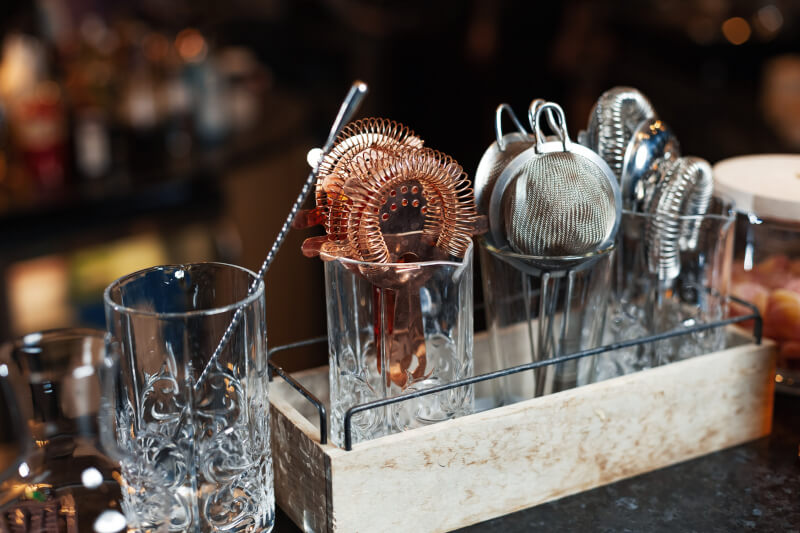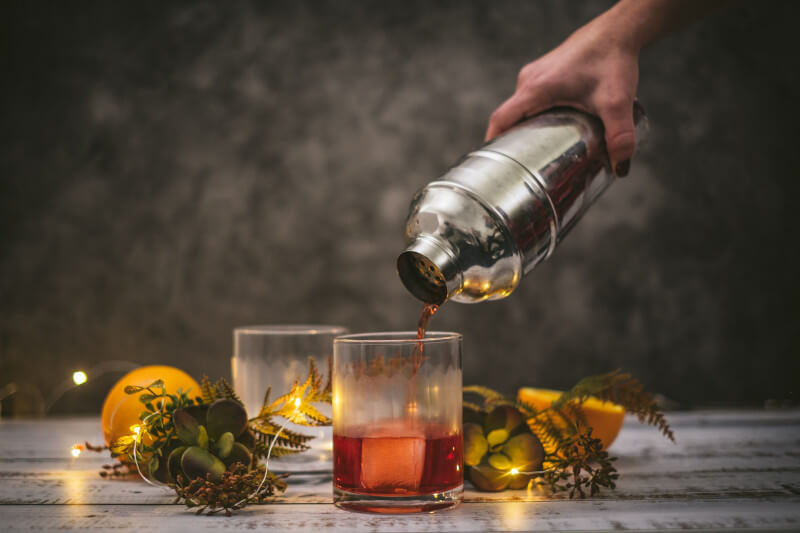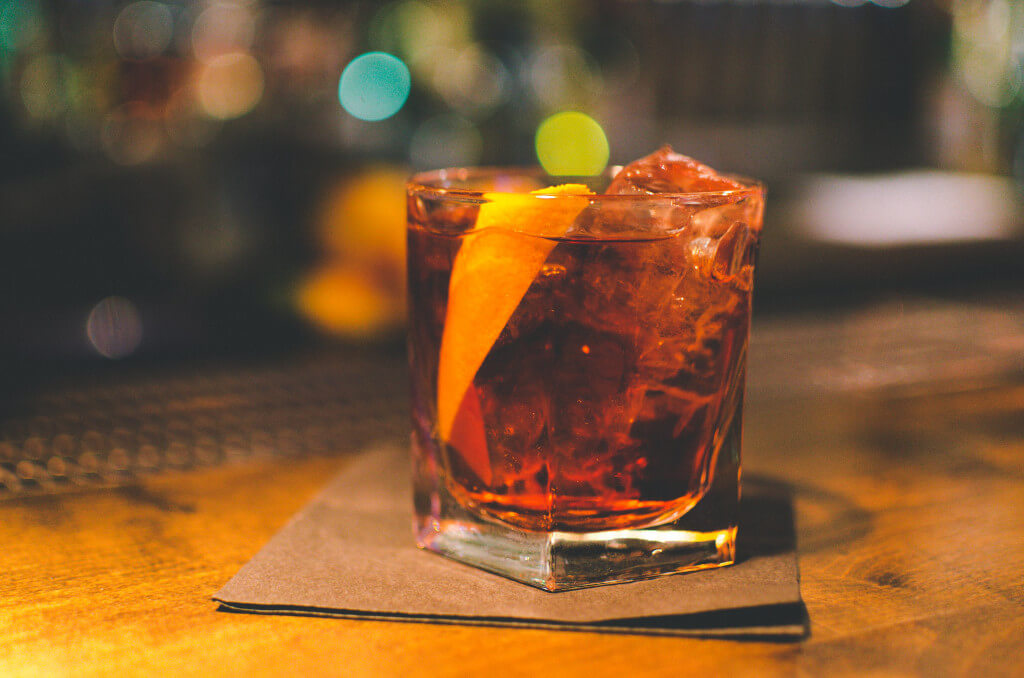Its Origins
The streets of New Orleans in the 19th century were bustling with culture, music, and, of course, unique beverages. The Sazerac, as legends tell it, was birthed here. Named after the Sazerac de Forge et Fils brand of Cognac originally used in its recipe, it soon transformed. Rye whisky replaced Cognac, but why the switch?
New Orleans
New Orleans in the 19th century wasn’t just another American city. As a pivotal port and a cultural crossroads, it was a place where traditions mingled, creating unique artistic and culinary experiences. Now, while the Sazerac is a product of this vibrant backdrop:
- Music and Merriment: Jazz, a genre that would eventually take the world by storm, was in its infancy in New Orleans. Picture this: as the earliest versions of the Sazerac were being concocted, the air would have been thick with the innovative sounds of jazz. The spontaneity and improvisation inherent to jazz mirror the cocktail’s evolution. How might the pulsating energy of live music have influenced bartenders’ creativity?
- Sazerac de Forge et Fils: This isn’t just a random choice of Cognac. The brand was one of the top imported spirits at the time, indicating New Orleans’ connectivity with global trade. But what’s more intriguing is the kind of clientele who would’ve had the means and taste to relish such a premium beverage. Could it be that the city’s elite, influenced by European tastes, were the first patrons of the Sazerac?
During the late 1800s, France was hit by the phylloxera epidemic, decimating grape crops. With Cognac supplies dwindling, bartenders adapted, and rye whisky took its rightful place in the cocktail. Yet, what remains consistent is the soul of the drink: the mesmerizing blend of spirits, bitters, and that essential touch of absinthe.
The Phylloxera Catastrophe
Phylloxera, a tiny pest, wreaked havoc in vineyards across Europe, but its impacts weren’t restricted to just grapes:
- Economic Impacts: France, being a major wine and Cognac producer, faced significant economic challenges during the phylloxera epidemic. The scarcity of Cognac drove up its prices, making it even more of a luxury. This affected the common man’s drink in Europe and led to American bartenders seeking alternatives. Thus, rye whiskey, which was more accessible and affordable, became the go-to substitute.
- Shifts in Drinking Culture: With Cognac in short supply, it wasn’t just the Sazerac that experienced a recipe change. Numerous cocktails and traditional drinks had to be reimagined. This inadvertently spurred innovation in the world of mixology. One wonders, how many other beloved concoctions owe their existence to such serendipitous circumstances.
Breaking Down the Sazerac: What Makes It Tick?

1. Rye Whisky
While many whiskies can dazzle the palate, rye offers a spiciness, a certain zest that pairs impeccably with the bitters. Ever wondered if there’s an alternative? While rye remains classic, some bartenders experiment with other whiskies to produce nuanced variations.
2. Peychaud’s Bitters
Why Peychaud’s? Its subtle notes of cherry, clove, and nutmeg are integral to the drink. Think of it as the heartbeat of the Sazerac. Would Angostura work? Possibly, but the result would be an entirely different cocktail experience.
3. Absinthe
A divisive spirit, wouldn’t you agree? The anise-flavored potion once vilified and even banned in parts of the US and Europe, is used to rinse the glass, providing the Sazerac its signature herbal aroma. If you’ve ever caught a whiff and been transported to a Parisian evening, you understand its significance.
4. Sugar Cube
Balance is key in mixology. The sugar cube isn’t just for sweetness; it’s there to mellow out the sharpness of the rye and the intensity of the bitters.
The European Connection
The Sazerac isn’t just an American classic; it has admirers across the Atlantic too. Europeans, with their deep appreciation for spirits and aperitifs, have found their twist on the drink. How so? Some European bars prefer Cognac over rye, harking back to the Sazerac’s original incarnation. And instead of sugar, a dash of simple syrup sometimes cuts. Ever tried a European Sazerac variant? If so, did you note the difference?
Tips For Mixing the Perfect Sazerac

Creating the Sazerac is an art, and as with all art forms, nuances matter. Here are a few insider secrets:
Glass Matters
Always use a chilled Old Fashioned glass. Ever noticed how the coldness amplifies the flavors?
The Stir
The ideal Sazerac isn’t shaken; it’s stirred. And not just any stir—a 30-second, gentle rotation, ensuring the sugar dissolves but the whisky doesn’t get bruised.
The Lemon Twist
Ever thought of why it’s just the twist and not the entire peel? It’s about extracting that fresh lemon oil without introducing the bitterness of the pith. Remember to discard the twist after expressing the oil over the drink. It’s a delicate dance of flavors.
The Sazerac that Stole the Show
I once crafted a Sazerac for a seasoned whisky enthusiast from Glasgow at a bar in New York. As I started with the rye, his raised eyebrow was palpable. “I’ve always had it with Cognac in Europe,” he mentioned. I proceeded, introducing him to the American variant. The first sip, the nod of approval, and his parting words, “When traditions meet, magic happens!” were all I needed.
The Sazerac, with its rich history and intricate blend of flavors, stands as a beacon in the world of whisky cocktails. Its origins, deeply rooted in the cultural tapestry of New Orleans and the economic shifts of the 19th century, offer not just a sip, but a story. For those aiming to ascend the ranks of whisky connoisseurship, appreciating the Sazerac is akin to appreciating a masterpiece in an art gallery. It’s more than just its components; it’s the tale it tells, the memories it evokes, and the legacy it leaves behind. The nuances of its preparation, the delicate balance of its ingredients, and its vibrant history serve as a masterclass in whisky appreciation.
Ponder this: Isn’t it fascinating how a simple cocktail can offer a rich tapestry of history, flavors, and experiences? How will you make your next Sazerac special?

